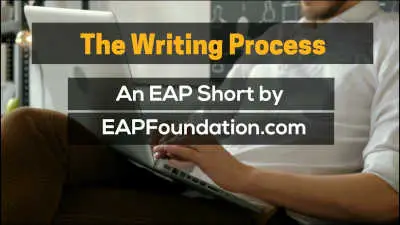Show AWL words on this page.
Show sorted lists of these words.


 







|
Proofreading is the final stage of the writing process. This page explains what proofreading is and gives some tips to help you proofread. There is a checklist at the end of the page.
What is proofreading?
Proofreading means to read and make corrections to a piece of writing (the word proof is a publishing term for a copy of a manuscript to be checked for errors before printing). By the time you reach the proofreading stage of the writing process, your work is almost complete. At this point the submission deadline might be very close, and you will probably already have spent a long time on the 'bigger' aspects of the task such as content and structure. Your job now is to focus on the 'smaller' aspects such as grammar, punctuation and spelling, in order to eliminate as many errors from the final draft as possible.
Proofreading tips
The following are some tips to help you in the proofreading process.
1) Take a break before your start. If you have only just finished writing, you will be very familiar with it and therefore less likely to see any errors. A break of even a few minutes can be useful, though if possible (if you have time!) set your writing aside for a day or two before checking. This will give you some distance from your writing and help you see it with a fresh eye.
2) Use a spellchecker as part of the proofreading process. Even if you have used one on a previous version, it is possible that new errors were added with any final additions or changes you made to the previous draft. Most word processing software packages (e.g. Microsoft's Word) come with a built-in spellchecker.
3) Check for your common mistakes. Everybody has their own individual kind of mistake that they frequently make. It might be missing apostrophe (e.g. students versus students') or subject-verb agreement (e.g. This mean instead of This means). Use feedback on previous writing to help you understand your common mistakes.
4) Make sure you take your time. Proofreading requires slower reading than normal, because you will want to check every word rather than skim through. If you read through quickly, you will probably miss many errors.
5) When checking for spelling, be careful of homophones (e.g. their versus there), which even proficient users make mistakes with. Also look out for words which are real words but which are the wrong ones for your meaning (e.g. you may have written form when you wanted to write format). These type of spelling errors will not be noticed by a spellchecker.
6) If possible, check your work using a hard (printed) copy. You will have typed your assignment on a computer, and changing the format from soft to hard copy may help you notice more errors.
Checklist
Below is a checklist for this section.
| Item | OK? | Comments |
| I have proofread my writing, focusing on the 'smaller' aspects such as grammar, punctuation and spelling. | ||
| I have taken a break before starting on proofreading (ideally a day or two). | ||
| I have used a spellchecker as part of the proofreading process. | ||
| I have checked for mistakes I commonly make (e.g. subject-verb agreement). | ||
| I have taken my time and read through slowly (not skim read). | ||
| I have paid attention to homophones and individual words. | ||
| I have used a hard (printed) copy to proofread. |
References
Cottrell, S. (2013) The Study Skills Handbook, 4th ed. Basingstoke: Palgrave Macmillan.
Purdue OWL (2018) Proofreading. Available at: https://owl.english.purdue.edu/owl/resource/561/01/ (Access date 23/3/18).
Next section
Read more about report writing in the next section.
Previous section
Read the previous article about redrafting.







